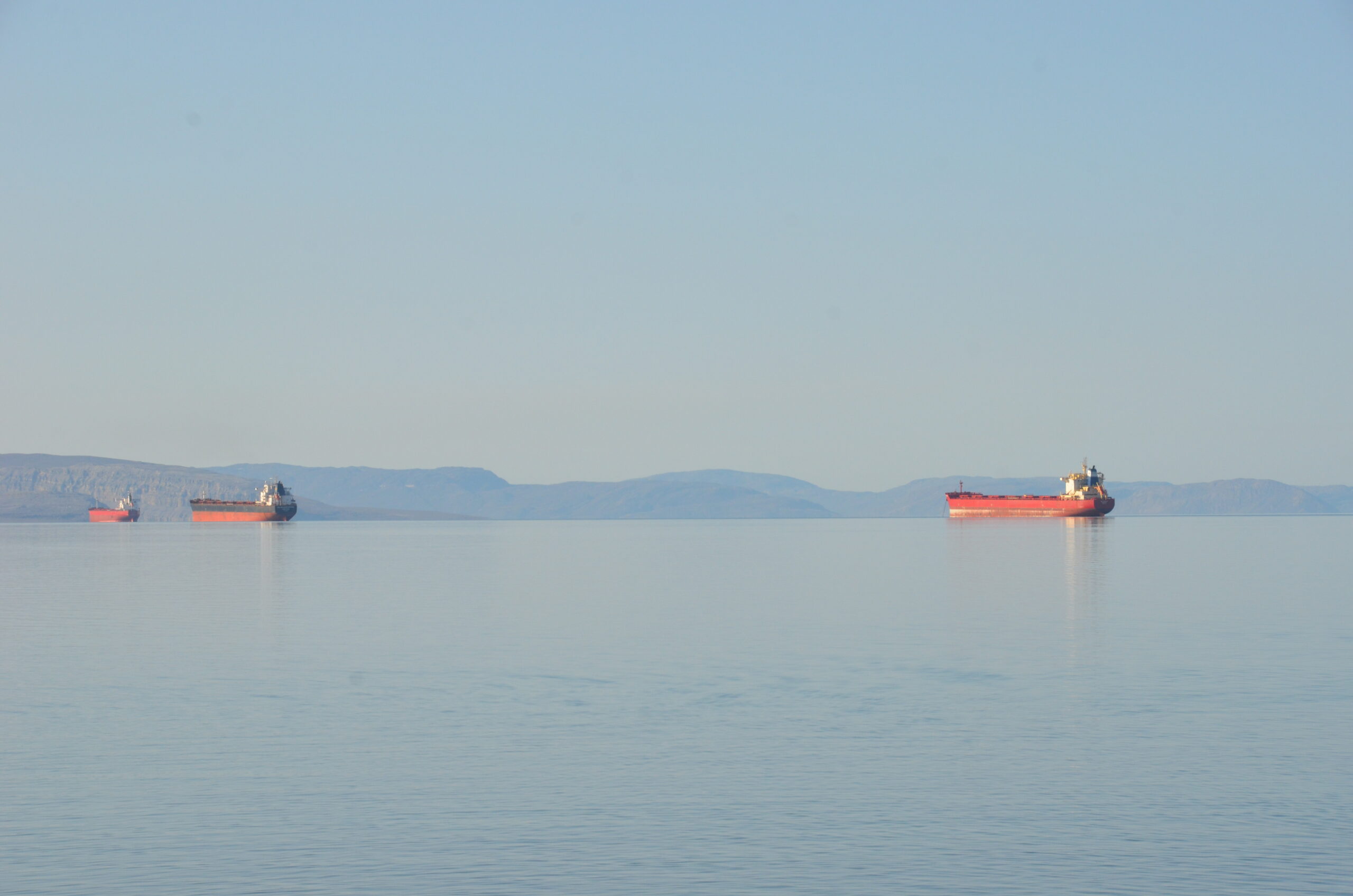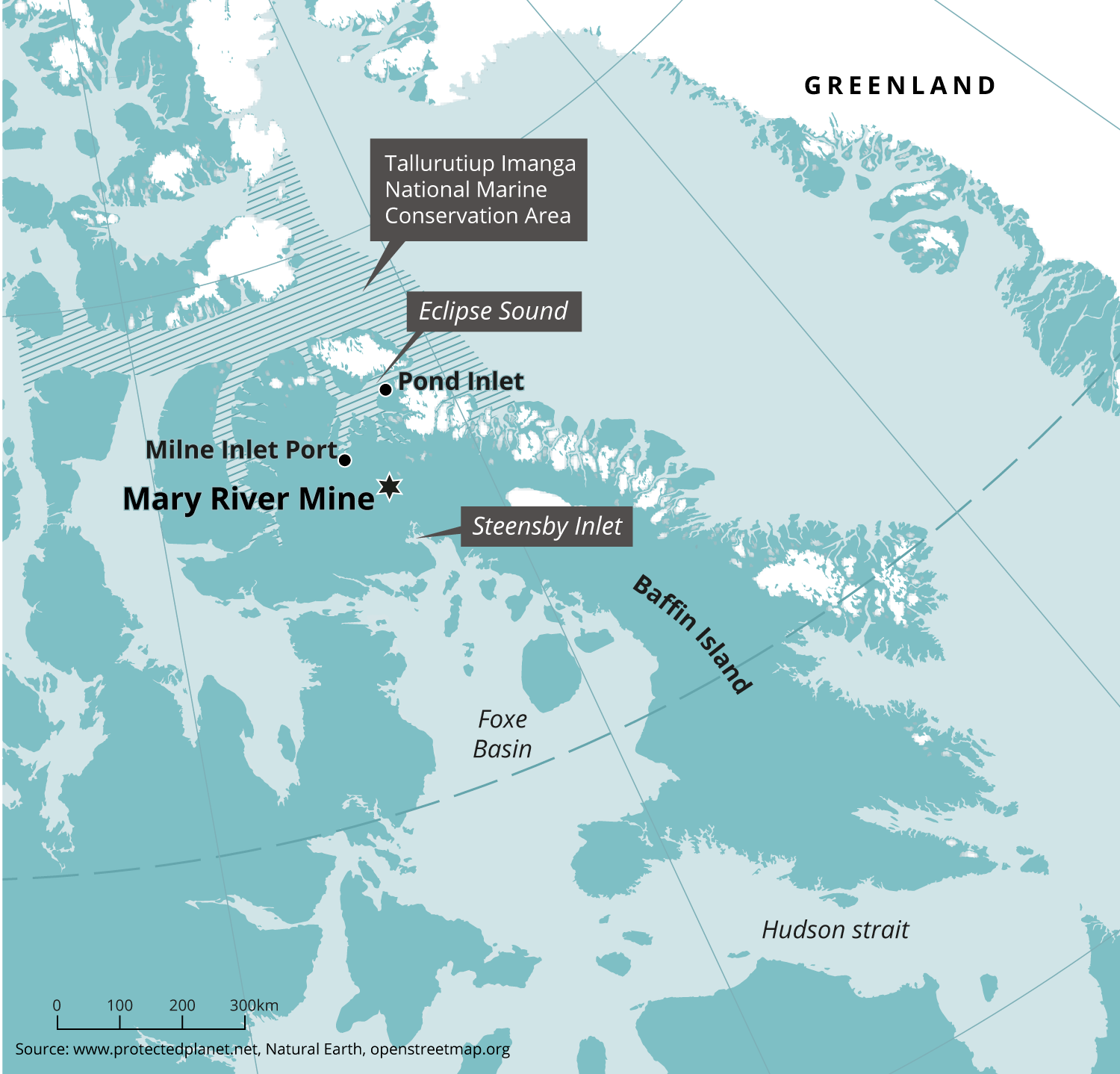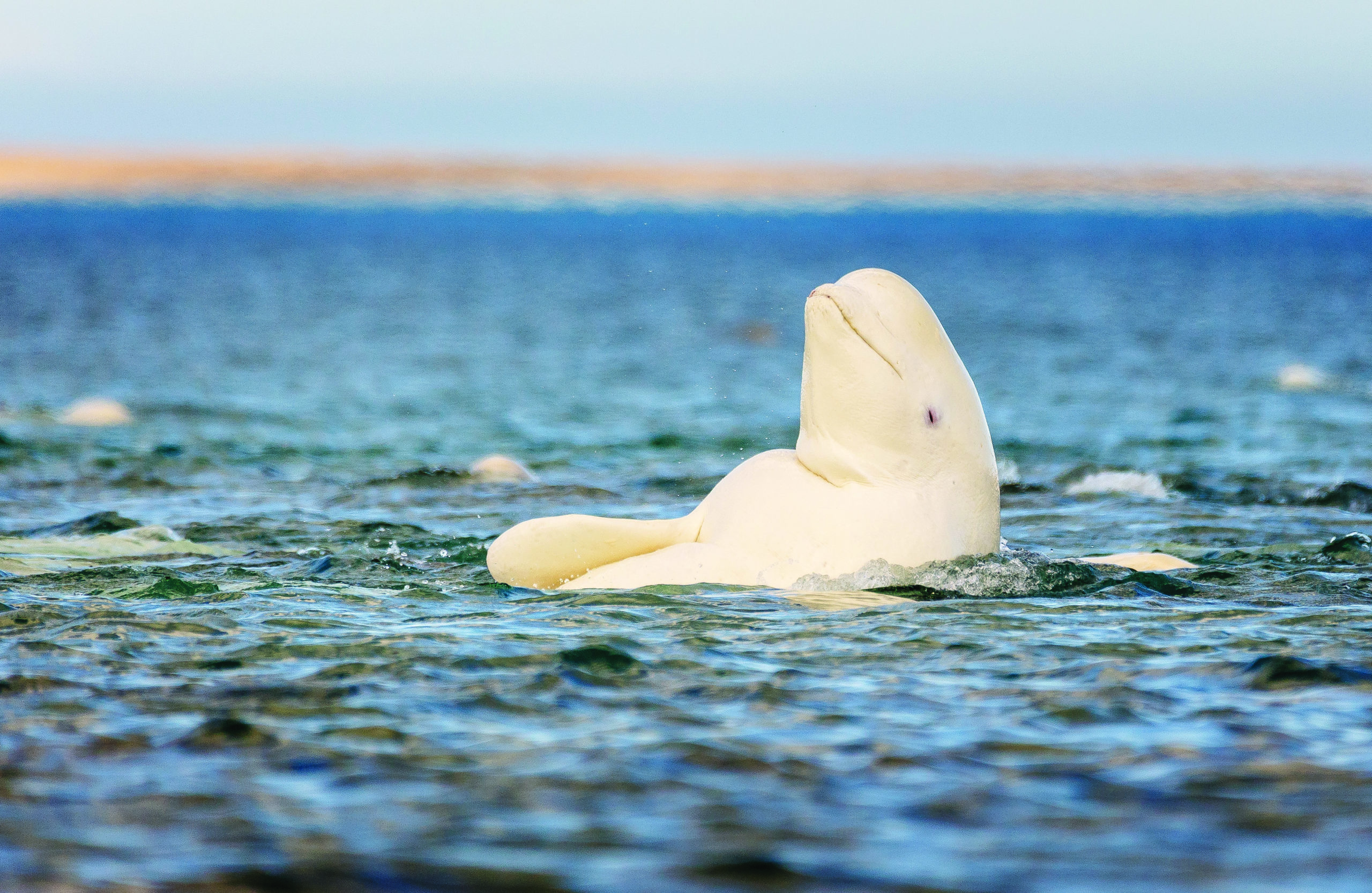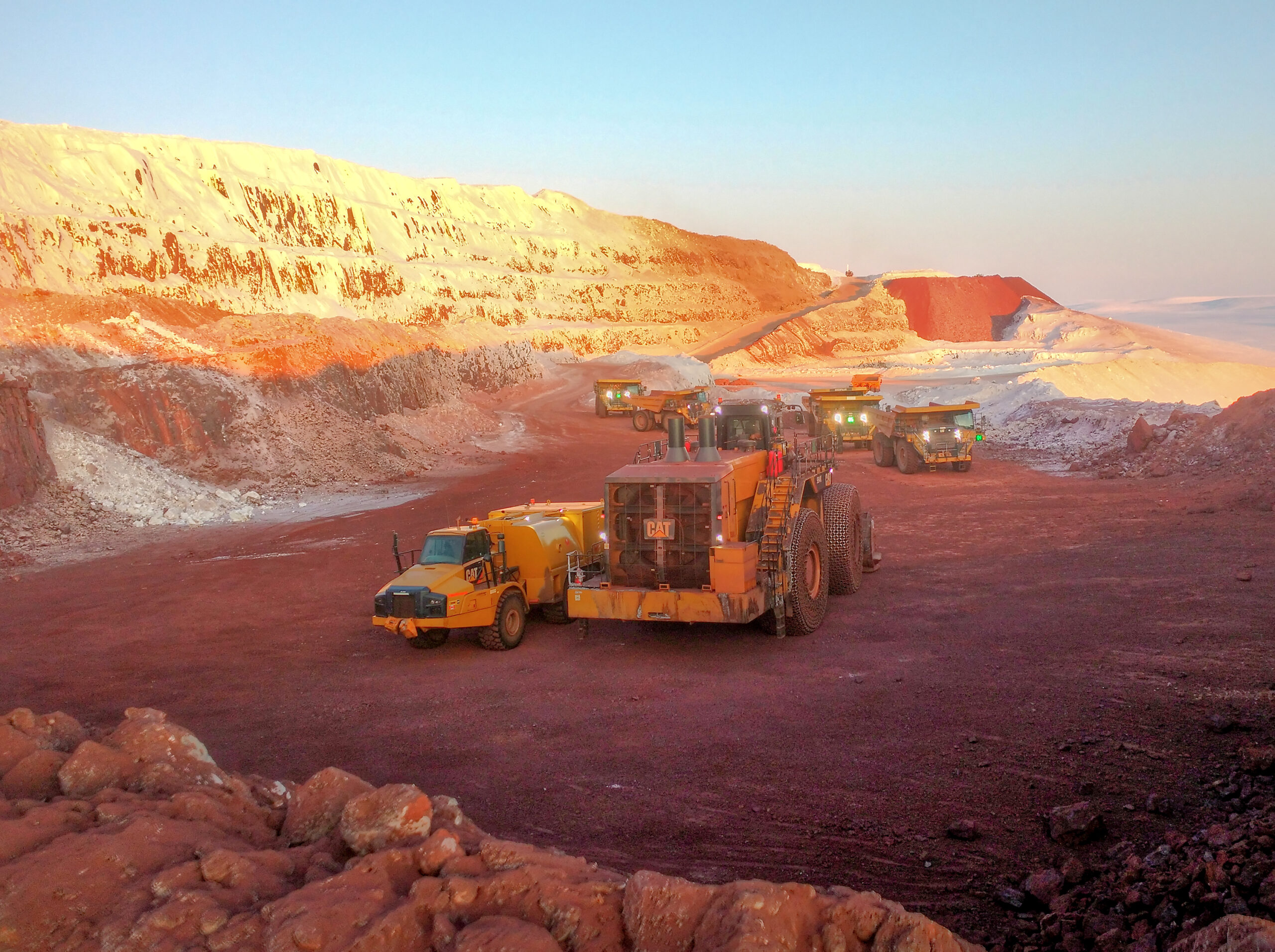What’s next for Baffinland’s Mary River Mine?
The Mary River iron mine is the biggest industrial development project and largest private-sector employer in Nunavut. Located in the northern interior of Baffin Island, and owned by Baffinland, it contributes nearly a quarter of the Arctic territory’s GDP.
Since extraction began in 2015, the iron mine has sparked similarly outsized controversy due to its harmful impacts on the environment and wildlife — and its latest plans may affect the whales and other marine mammals of Steensby Inlet.

In 2022, aligning itself with science and Inuit organizations, the Government of Canada rejected Baffinland’s proposal to double production at its iron mine. Following that failed bid, which would have increased shipping through a marine protected area, the company is now seeking to leverage a 12-year-old project certificate to triple its annual ore production to 18 million tonnes using a different shipping route.
This latest expansion would entail the construction of the first railway in the Canadian Arctic as well as a deep-water port at Steensby Inlet, which extends north from Foxe Basin into central Baffin Island. The railway would run through the critical habitat of a heavily depleted caribou population that has only recently begun to show signs of recovery. The expansion would also triple vessel traffic — from an annual maximum of 84 bulk carrier transits to a maximum of 242 — and support year-round shipping by icebreaking, further threatening ice-dependent wildlife and accelerating sea ice loss.
How we got here
On August 8, 2015, the bulk carrier Federal Tiber departed Milne Port carrying 53,000 tonnes of iron ore destined for Europe. This voyage marked the beginning of ore shipments from the Mary River Mine. By 2019, ships travelling to and from the mine had increased traffic in Milne Inlet by 583 per cent.

Baffinland is currently approved to produce 6 million tonnes of ore in 2024, supported by up to 84 bulk carrier round-trip voyages during the ice-free season. As in previous years, these ships access Milne Port through Eclipse Sound, which is part of the Tallurutiup Imanga National Marine Conservation Area.
This 108,000 square kilometre zone, Canada’s largest marine protected area, is home to 60 per cent of the world’s narwhals as well as bowhead and beluga whales, walrus and polar bears. Baffinland’s summer shipping operations coincide with the annual narwhal migration from Baffin Bay to the inlets and fjords of Baffin Island.
For the predominantly Inuit, 1600-person community of Pond Inlet on Eclipse Sound, the increased ship traffic is a grave and ongoing concern. Hunters have reported fewer narwhals, seals, seabirds and Arctic char in waters where they have traditionally been harvested. Displacement of these species, which are important traditional food sources, is a fundamental threat to cultural continuity and food security.
Aerial surveys have indicated a dramatic decrease in narwhal numbers in Eclipse Sound: from more than 20,000 in 2004 to just over 10,000 in 2023. The remaining narwhals appear more stressed. In fact, a recent Fisheries and Oceans Canada study supported by WWF-Canada’s Arctic Species Conservation Fund found a near doubling of their cortisol levels from 2013 to 2020.
More noise pollution
Shipping is the most significant contributor to underwater noise pollution worldwide, affecting marine species’ abilities to navigate, reproduce, feed and communicate. Marine mammals like whales are especially sensitive to acoustic habitat degradation, which can drive up the risk of fatal ship strikes and cause whales to become separated from their pods and calves. Underwater noise from ships servicing the mine is not only distressing narwhal, but likely contributing to the displacement of several marine species in Eclipse Sound.

Baffinland has implemented some mitigation measures, including ship slowdowns and convoys near Milne Inlet. It has also introduced larger bulk carriers that, while noisier, can reduce the overall number of transits. Nevertheless, its 2022 proposal to double production to 12 million tonnes annually was rejected by the Minister of Northern Affairs in part because the Nunavut Impact Review Board had concluded that the company could not adequately mitigate the expansion’s potential environmental impact.
Although narwhal populations across Canada have remained stable so far, concerns persist about the species’ ability to adapt to sea ice loss and rapidly growing industrial activities, such as shipping from developments like the Baffinland mine.
Steensby expansion plans
Construction of the new railway and port is expected to take four years. If realized, the Steensby expansion will triple ship activity associated with the mine. This will shift traffic from Eclipse Sound to the ecologically significant waters of Hudson Strait — considered a “superhighway for whales” — and to Foxe Basin, a summering ground for bowheads and the largest concentration of walrus in Canada. This region is also home to narwhals, polar bears and seals — a food web that supports food sovereignty for Inuit communities in the region.

The result of this additional shipping will be more underwater noise, more polluting discharges, and a higher risk of ship strikes and fuel spills. Harmful stack emissions, including sulphur and nitrogen compounds, would also increase dramatically, as would black carbon emissions, which accelerate sea ice melt, increase atmospheric warming, and contribute to heart and respiratory diseases in Arctic communities.
Despite its commitment to refrain from icebreaking in the spring, Baffinland’s approval for year-round shipping remains concerning because icebreaking vessels can severely affect Arctic wildlife by provoking behavioural and physiological responses to noise, causing entrapment, and destroying and fragmenting sea ice habitat. Icebreaking also poses risks to Inuit who travel on sea ice because it can cut off their return routes.
Since the issuance of Baffinland’s original project certificate 12 years ago, stakeholders and rights holders have gained a better understanding of how the mine’s ship traffic negatively affects the marine environment and wildlife, such as whales.
The potential economic benefits of the mine and its expansion plan must be weighed carefully against the significant environmental, ecological and cultural risks — and Inuit priorities must guide whatever comes next.
This article originally appeared in WWF Arctic’s latest issue of The Circle, “Making Waves: Getting it right for Arctic whales.“
